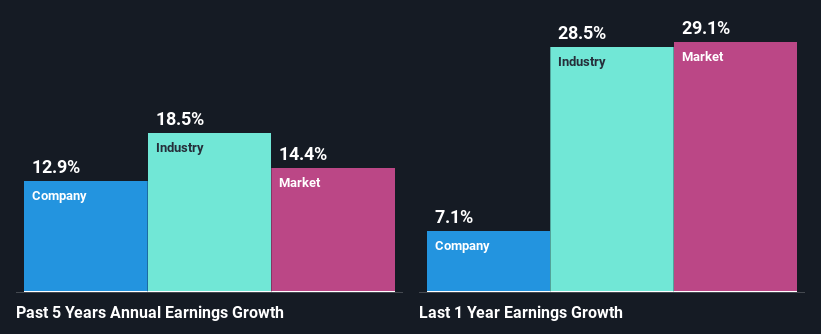Bapcor Limited's (ASX:BAP) Stock Has Shown Weakness Lately But Financial Prospects Look Decent: Is The Market Wrong?
Bapcor (ASX:BAP) has had a rough three months with its share price down 5.5%. But if you pay close attention, you might find that its key financial indicators look quite decent, which could mean that the stock could potentially rise in the long-term given how markets usually reward more resilient long-term fundamentals. In this article, we decided to focus on Bapcor's ROE.
Return on equity or ROE is an important factor to be considered by a shareholder because it tells them how effectively their capital is being reinvested. In simpler terms, it measures the profitability of a company in relation to shareholder's equity.
View our latest analysis for Bapcor
How To Calculate Return On Equity?
ROE can be calculated by using the formula:
Return on Equity = Net Profit (from continuing operations) ÷ Shareholders' Equity
So, based on the above formula, the ROE for Bapcor is:
10% = AU$109m ÷ AU$1.1b (Based on the trailing twelve months to December 2021).
The 'return' refers to a company's earnings over the last year. That means that for every A$1 worth of shareholders' equity, the company generated A$0.10 in profit.
What Has ROE Got To Do With Earnings Growth?
So far, we've learned that ROE is a measure of a company's profitability. We now need to evaluate how much profit the company reinvests or "retains" for future growth which then gives us an idea about the growth potential of the company. Assuming all else is equal, companies that have both a higher return on equity and higher profit retention are usually the ones that have a higher growth rate when compared to companies that don't have the same features.
A Side By Side comparison of Bapcor's Earnings Growth And 10% ROE
At first glance, Bapcor seems to have a decent ROE. Even when compared to the industry average of 10% the company's ROE looks quite decent. This probably goes some way in explaining Bapcor's moderate 13% growth over the past five years amongst other factors.
Next, on comparing with the industry net income growth, we found that Bapcor's reported growth was lower than the industry growth of 18% in the same period, which is not something we like to see.
Earnings growth is a huge factor in stock valuation. The investor should try to establish if the expected growth or decline in earnings, whichever the case may be, is priced in. This then helps them determine if the stock is placed for a bright or bleak future. What is BAP worth today? The intrinsic value infographic in our free research report helps visualize whether BAP is currently mispriced by the market.
Is Bapcor Using Its Retained Earnings Effectively?
The high three-year median payout ratio of 57% (or a retention ratio of 43%) for Bapcor suggests that the company's growth wasn't really hampered despite it returning most of its income to its shareholders.
Moreover, Bapcor is determined to keep sharing its profits with shareholders which we infer from its long history of seven years of paying a dividend. Based on the latest analysts' estimates, we found that the company's future payout ratio over the next three years is expected to hold steady at 56%. Still, forecasts suggest that Bapcor's future ROE will rise to 12% even though the the company's payout ratio is not expected to change by much.
Conclusion
Overall, we feel that Bapcor certainly does have some positive factors to consider. Its earnings growth is decent, and the high ROE does contribute to that growth. However, investors could have benefitted even more from the high ROE, had the company been reinvesting more of its earnings. With that said, the latest industry analyst forecasts reveal that the company's earnings growth is expected to slow down. To know more about the company's future earnings growth forecasts take a look at this free report on analyst forecasts for the company to find out more.
Have feedback on this article? Concerned about the content? Get in touch with us directly. Alternatively, email editorial-team (at) simplywallst.com.
This article by Simply Wall St is general in nature. We provide commentary based on historical data and analyst forecasts only using an unbiased methodology and our articles are not intended to be financial advice. It does not constitute a recommendation to buy or sell any stock, and does not take account of your objectives, or your financial situation. We aim to bring you long-term focused analysis driven by fundamental data. Note that our analysis may not factor in the latest price-sensitive company announcements or qualitative material. Simply Wall St has no position in any stocks mentioned.

 Yahoo Sport
Yahoo Sport 






































